Cottage cheese is a versatile, protein-rich ingredient that can add creaminess and flavor to a wide range of meals. Whether you’re aiming for a nutritious breakfast, a quick snack, or a hearty dinner, this humble dairy product can fit seamlessly into your meal plan. Below, you’ll find an in-depth guide to cottage cheese, from its history and nutritional benefits to mouthwatering recipes and practical kitchen tips.
Why Cottage Cheese Deserves a Place in Your Kitchen
A Brief History
Cottage cheese has been enjoyed for centuries. It’s believed to have originated in Europe as a simple cheese that was easy to make at home using leftover milk. Because of its mild flavor and adaptable nature, cottage cheese spread across the globe, earning a place in diverse cuisines.
Nutritional Highlights
Cottage cheese is often celebrated by nutrition enthusiasts, fitness buffs, and health-conscious cooks for good reason:
- High Protein Content
Each spoonful packs a generous amount of protein, vital for muscle repair and growth. In real-life terms, think of it as a quick way to recharge after a light workout, much like a car needing fuel to continue running efficiently. - Low-Calorie Option
Compared to other creamy cheeses, cottage cheese contains fewer calories. This makes it a helpful companion for individuals looking to manage or lose weight without sacrificing satisfaction. - Rich in Calcium
Calcium is crucial for building and maintaining strong bones. Cottage cheese can act like a friendly neighbor, lending “support” to keep your bones healthy and resilient. - Vitamins and Minerals
Alongside protein and calcium, cottage cheese also contains B vitamins, phosphorus, and selenium. These nutrients play roles in energy production, bone health, and immune support.
Versatile Flavor Profile
Cottage cheese has a mild, slightly tangy taste and a soft, creamy texture. Because of this neutral flavor, it can blend into both sweet and savory recipes. Consider cottage cheese like a blank canvas, ready to adopt any taste or seasoning you introduce.
10 Easy Cottage Cheese Recipes for Deliciously Healthy Meals
Cottage cheese is a versatile, protein-rich ingredient that can add creaminess and flavor to a wide range of meals. Whether you’re aiming for a nutritious breakfast, a quick snack, or a hearty dinner, this humble dairy product can fit seamlessly into your meal plan. Below, you’ll find 10 easy cottage cheese recipes, from fluffy pancakes and smoothie bowls to lighter lasagna and stuffed peppers, each designed to elevate your nutrition effortlessly while keeping your taste buds happy.
Choosing the Perfect Cottage Cheese
Not all cottage cheese tastes or feels the same. Here are some pointers to help you find the type that suits your needs best:
Types of Cottage Cheese
- Small Curd
Features small, delicate curds and a smooth consistency, perfect for blending into pancake batters, smoothie bowls, or dips. - Large Curd
Contains bigger, more defined curds. Ideal for dishes that benefit from a heartier texture, such as layered casseroles or savory pies. - Low-Fat or Non-Fat
Designed for those watching their calorie intake. It still offers plenty of protein but often has a lighter taste. - Full-Fat
A richer, creamier version that works well in indulgent recipes like creamy dips or baked goods.
Factors to Consider
- Ingredient List
Look for cottage cheese brands that keep things simple, often just milk, cultures, and salt. Fewer additives generally mean a fresher taste. - Freshness
Always check the expiration date to ensure you’re getting a fresh product. Fresher cottage cheese tends to be creamier, smoother, and more appetizing. - Flavor and Texture
If possible, do a quick taste test. Some cottage cheese might be tangier or saltier. Choose a flavor profile that suits your recipes and personal preference. - Dietary Preferences
If you’re following a vegetarian or halal diet, always verify the label to ensure the product aligns with your lifestyle. There are also plant-based alternatives made from almond, soy, or other non-dairy bases for those seeking dairy-free options.
Essential Tools and Ingredients

Kitchen Tools
- Mixing Bowls
Useful for combining ingredients, whether you’re whipping up pancake batter or blending a creamy dip. - Blender or Food Processor
Ideal for creating smooth textures and mixing cottage cheese into sauces, spreads, or smoothies. - Measuring Cups and Spoons
Ensures accurate ingredient ratios, a key factor for consistent cooking or baking. - Non-Stick Skillet or Saucepan
Helps reduce the amount of oil or butter needed, aligning with health-focused cooking. - Baking Dish
Essential for casseroles, lasagnas, or baked pasta dishes.
Must-Have Ingredients
- Fresh Fruits and Vegetables
Strawberries, blueberries, spinach, bell peppers, and tomatoes can liven up cottage cheese-based dishes. - Whole Grains
Items like whole-grain bread, brown rice, or quinoa complement the protein in cottage cheese, creating balanced meals. - Herbs and Spices
Basil, dill, garlic, paprika, black pepper, and cumin can elevate the flavor of cottage cheese. - Nuts and Seeds
Almonds, walnuts, chia seeds, and sunflower seeds add both crunch and healthy fats. - Natural Sweeteners
Honey or maple syrup can sweeten cottage cheese dishes without resorting to refined sugars.
Classic Cottage Cheese Recipes for Every Meal
Below are some tried-and-true recipes that highlight the versatility of cottage cheese. Each recipe offers a twist on familiar dishes, making them healthier and just as delicious.
Fluffy Cottage Cheese Pancakes
Why You’ll Love Them:
- Perfect for a satisfying breakfast.
- Extra protein helps keep you full longer.
- Light and fluffy texture.
Ingredients
- 1 cup cottage cheese (small curd preferred)
- 2 eggs
- ½ cup all-purpose flour
- 1 teaspoon baking powder
- 1 tablespoon sugar (optional or replace with honey)
- Pinch of salt
- Oil or butter for cooking
Instructions
- In a bowl, whisk the cottage cheese and eggs until you have a smooth mixture.
- Stir in the flour, baking powder, sugar, and salt, mixing just until combined.
- Warm a non-stick skillet over medium heat with a light coating of oil or butter.
- Pour about ¼ cup of batter for each pancake. Cook until bubbles form on the surface, then flip.
- Serve with fresh berries, sliced bananas, or a drizzle of honey.
Real-Life Example:
Think of these pancakes like little fluffy pillows that can be sweet or savory. Top with scrambled eggs and herbs for a brunch twist or go classic with fresh fruit and honey.
Lighter Cottage Cheese Lasagna
Why You’ll Love It:
- A comforting dish made lighter with cottage cheese instead of ricotta.
- Great for family dinners or meal prep.
- Balances hearty flavors with lower overall fat content.
Ingredients
- 9 lasagna noodles
- 2 cups cottage cheese (any curd size)
- 1 pound ground beef or ground turkey (halal)
- 2 cups marinara sauce
- 2 cups shredded mozzarella cheese
- 1 cup grated Parmesan cheese
- 1 onion, chopped
- 2 cloves garlic, minced
- Salt and pepper to taste
- Fresh basil (optional garnish)
Instructions
- Preheat your oven to 375°F (190°C). Cook lasagna noodles according to the package directions.
- In a skillet, sauté the chopped onion and minced garlic until translucent. Add the ground beef or turkey, seasoning with salt and pepper. Cook thoroughly.
- Spread a thin layer of marinara sauce on the bottom of a baking dish.
- Arrange 3 cooked noodles on top of the sauce.
- Spread half of the cottage cheese over the noodles. Layer on about a third of the cooked meat mixture, then a small portion of marinara sauce.
- Continue layering: noodles → cottage cheese → meat mixture → sauce. Finish with a final layer of noodles, the remaining sauce, and top with the mozzarella and Parmesan cheese.
- Cover with foil and bake for 25 minutes. Remove the foil and bake an additional 10 minutes to brown the cheese on top.
- Let the lasagna rest for 5–10 minutes before slicing. Garnish with fresh basil.
Why It Works:
Swapping traditional ricotta for cottage cheese lowers the fat content. The result is a lighter texture that still tastes indulgent, much like using a lighter paint color can make a room feel more spacious.
Protein-Packed Smoothie Bowl
Why You’ll Love It:
- Quick breakfast or snack that’s both nutritious and filling.
- Customizable with your favorite fruits and toppings.
- Smooth and creamy base.
Ingredients
- 1 cup cottage cheese (preferably small curd)
- 1 frozen banana
- ½ cup frozen berries (e.g., strawberries, raspberries, blueberries)
- 1 tablespoon honey or maple syrup
- ½ teaspoon vanilla extract
- Toppings: granola, fresh fruit, nuts, seeds
Instructions
- Add cottage cheese, frozen banana, frozen berries, honey (or maple syrup), and vanilla extract to a blender.
- Blend until smooth, pausing to scrape down the sides if needed.
- Pour the mixture into a bowl.
- Top with granola, fresh fruit slices, and any nuts or seeds you prefer.
- Enjoy immediately.
Tip:
This smoothie bowl is like a mini “power station.” It supplies energy, vitamins, and protein in one quick meal. Imagine you have a busy morning, a smoothie bowl will keep you satisfied and ready to tackle your tasks.
Cottage Cheese Stuffed Peppers
Why You’ll Love It:
- Easy to prepare and visually appealing.
- Great way to add vegetables to your diet.
- High in protein and nutrients.
Ingredients
- 4 bell peppers (any color)
- 2 cups cottage cheese
- 1 cup cooked brown rice (or quinoa)
- 1 cup diced tomatoes (fresh or canned)
- 1 teaspoon dried oregano
- 1 teaspoon dried basil
- Salt and pepper to taste
- Shredded mozzarella cheese (optional)
Instructions
- Preheat your oven to 375°F (190°C).
- Slice the tops off the bell peppers and remove the seeds.
- In a bowl, combine cottage cheese, cooked brown rice, diced tomatoes, oregano, basil, salt, and pepper.
- Spoon the mixture into each bell pepper, filling them generously.
- Place the stuffed peppers in a baking dish. Optionally top with a small sprinkle of shredded mozzarella.
- Bake for 20–25 minutes or until the peppers are tender and the filling is heated through.
Real-Life Analogy:
Think of these peppers like little boats: the pepper “boat” holds a protein-rich and flavorful “cargo” of rice, tomatoes, and cottage cheese.
Herbed Cottage Cheese Dip
Why You’ll Love It:
- Quick to make, perfect for parties or afternoon snacking.
- Delicious alternative to heavier sour cream-based dips.
- Great with crackers, veggie sticks, or pita bread.
Ingredients
- 1 cup cottage cheese
- 1 tablespoon chopped fresh dill
- 1 tablespoon chopped fresh parsley
- 1 teaspoon garlic powder (or 1 clove fresh garlic, minced)
- Salt and black pepper to taste
- Optional: A squeeze of lemon juice for added brightness
Instructions
- Blend the cottage cheese until slightly smooth (you can leave some texture if you prefer).
- Stir in the dill, parsley, garlic, salt, and pepper.
- Adjust seasonings to taste, adding lemon juice if desired.
- Serve with vegetable sticks, crackers, or whole-grain bread.
Serving Idea:
Set this dip alongside crunchy cucumber slices, baby carrots, or baked tortilla chips. It’s like having a mini “salad bar” in a bowl, all held together by creamy cottage cheese.

What to Serve with Cottage Cheese Recipes: Healthy and Flavorful Combinations
When serving cottage cheese recipes, choosing complementary sides can enhance your meals nutritionally and flavorfully. Pairing cottage cheese dishes like High Protein Cottage Cheese Pancakes with fresh fruits or a drizzle of honey can provide natural sweetness and added nutrients. For lunch, combine cottage cheese with Low-Calorie Lunch Recipes such as vibrant salads or wholesome grain bowls to boost fiber and vitamins. Dinner can include a satisfying Vegetable Stir Fry with Peanut Sauce, offering a delicious balance of proteins, vegetables, and healthy fats.
Extra Tips for Cooking and Storage
- Prevent Curds from Breaking
When mixing cottage cheese into batters or sauces, stir gently. Overmixing can break down the curds, making the texture watery. - Use It as a Base for Sauces
Pureeing cottage cheese can create a creamy base for pasta sauces without relying on heavy cream. Add your favorite spices or herbs to customize. - Watch the Temperature
Cottage cheese can curdle if exposed to high heat for too long. Cook at moderate temperatures or add it toward the end of cooking to maintain its consistency. - Store in Airtight Containers
Once opened, transfer any leftover cottage cheese to an airtight container to maintain freshness. Always keep it refrigerated and use within the recommended time frame (5–7 days). - Blend Before Adding to Desserts
If you’re incorporating cottage cheese into sweet treats, blend it thoroughly. This ensures a smoother texture in puddings, cheesecakes, or fruit parfaits.
Elevating Your Nutrition with Cottage Cheese
Pairing Cottage Cheese with Other Foods
- Whole Grains
Combining high-protein cottage cheese with the complex carbohydrates of brown rice or quinoa creates a balanced meal. The fiber in whole grains works like a steady release of energy, while the protein supports muscle maintenance. - Fresh Vegetables
Mixing cottage cheese with spinach, bell peppers, or tomatoes adds vitamins and antioxidants. Think of it as strengthening a team, each player (nutrient) brings a unique benefit to the plate. - Fruits and Honey
Cottage cheese drizzled with honey and topped with berries transforms it into a naturally sweet dessert or snack. The protein from the cheese slows sugar absorption, helping keep energy levels stable.
Cottage Cheese for Different Dietary Goals
- Weight Management
It’s filling yet low in calories, helping with portion control.- Example: Cottage cheese as a midday snack with carrots or celery.
- Muscle Building
The high protein supports muscle recovery.- Example: Post-workout smoothie bowl with blended cottage cheese, banana, and peanut butter.
- Bone Health
Calcium and phosphorus contribute to stronger bones.- Example: Combine cottage cheese with seeds like sesame or chia, also known for their bone-supporting minerals.
- Low-Sodium Needs
Opt for low-sodium varieties and season with herbs.- Example: Cottage cheese dip seasoned with dill, garlic, and lemon, no extra salt required.
Adding Variety to Your Meals
- Cottage Cheese Toast
Spread it on whole-grain toast and layer on sliced cucumbers or strawberries. - Stuffed Veggie Boats
Use zucchini or hollowed-out tomatoes as a vessel for cottage cheese mixed with herbs. - Whipped Cottage Cheese “Sauce”
Blend cottage cheese into a smooth consistency and drizzle over roasted vegetables or grilled chicken.
FAQs
Is Cottage Cheese Good for Weight Loss?
Can I Substitute Cottage Cheese for Ricotta?
Can I Freeze Cottage Cheese?
How Can I Make Cottage Cheese Creamier?
Embracing Cottage Cheese in Your Diet
Cottage cheese stands out as a nutrient-dense ingredient that’s both budget-friendly and easy to work with. Whether you’re cooking for one or preparing family meals, it caters to a variety of dietary preferences and goals.
Key Takeaways
- High Protein, Low Calorie
Excellent for weight management and muscle building. - Versatile Flavor
Suits sweet and savory dishes alike. - Easy to Find
Widely available in grocery stores, often with multiple fat-level options. - Endless Applications
Perfect in breakfast pancakes, dips, main courses, desserts, and more.
Embrace cottage cheese by experimenting with new recipes or simply enjoy it as a snack topped with fruits and seeds. Each spoonful can bring you closer to your nutrition targets without compromising on taste.

Fluffy Cottage Cheese Pancakes
Equipment
- Mixing Bowl
- Whisk
- Non-stick Skillet
- Spatula
Ingredients
Pancake Batter
- 1 cup cottage cheese small curd preferred
- 2 eggs
- 1/2 cup all-purpose flour
- 1 tsp baking powder
- 1 tbsp sugar optional or replace with honey
- 1 pinch salt
For Cooking
- oil or butter for greasing skillet
Instructions
- In a bowl, whisk the cottage cheese and eggs until smooth.
- Stir in the flour, baking powder, sugar, and salt until just combined.
- Heat a non-stick skillet over medium heat and lightly grease with oil or butter.
- Pour about 1/4 cup of batter per pancake. Cook until bubbles form on top, then flip and cook until golden.
- Serve warm with toppings like fresh berries, sliced banana, or a drizzle of honey.


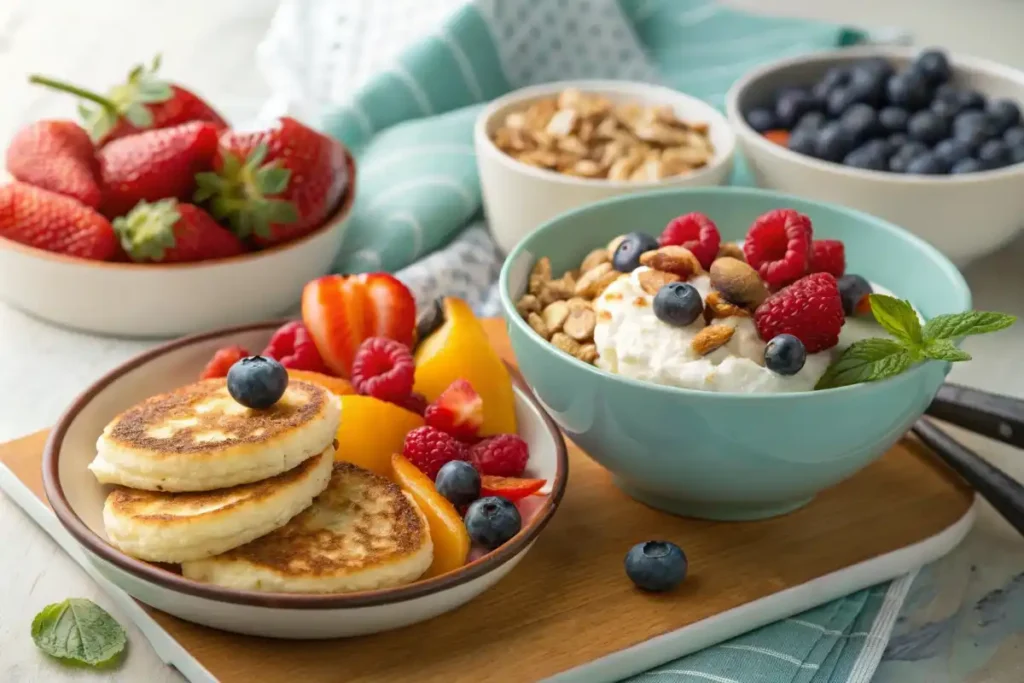

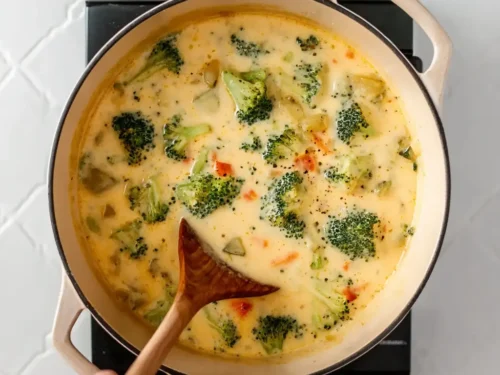
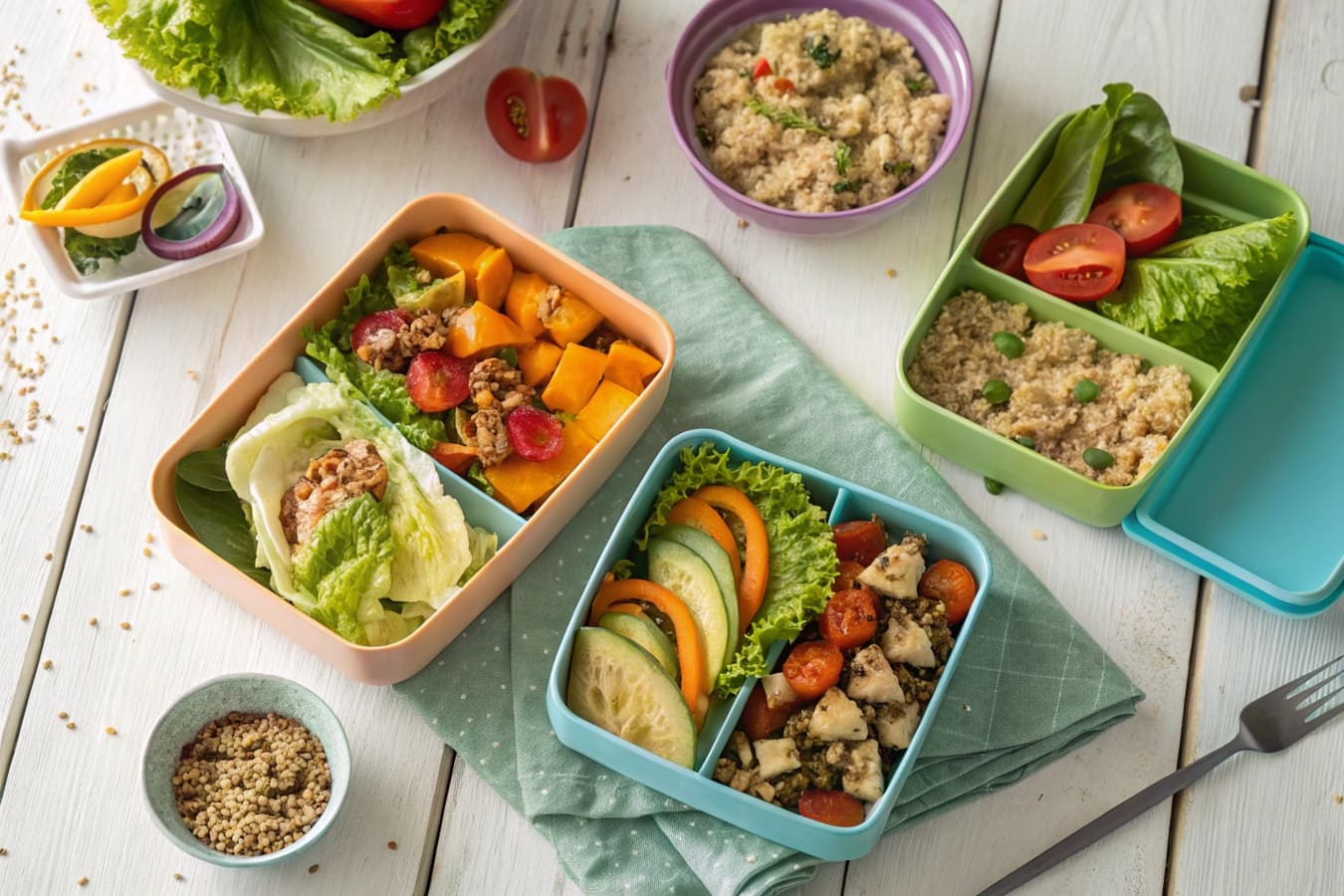
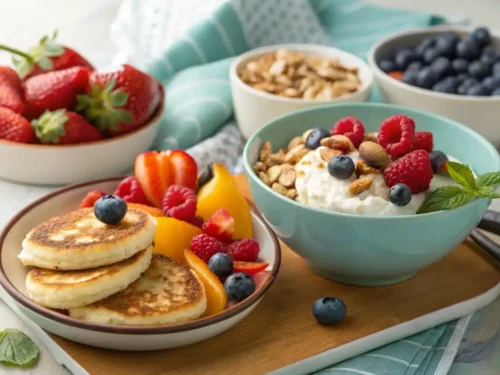



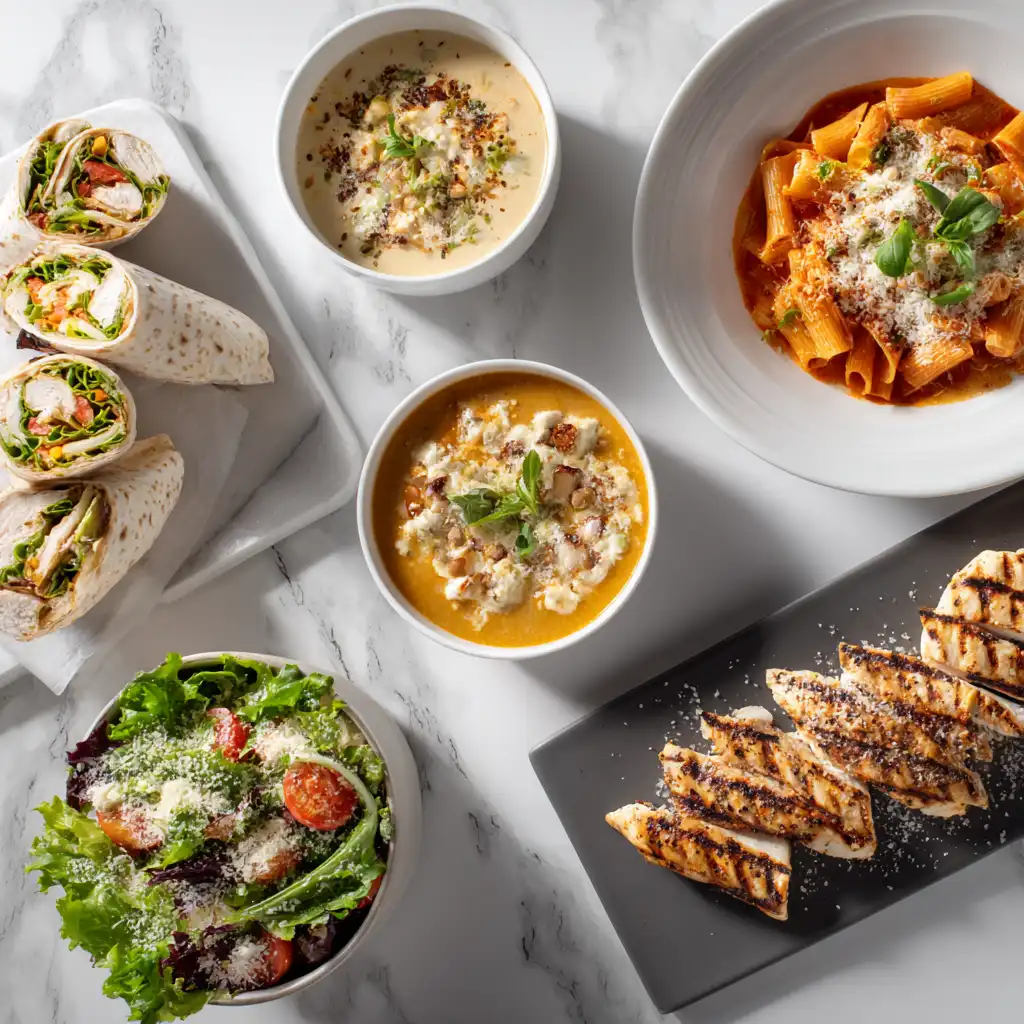
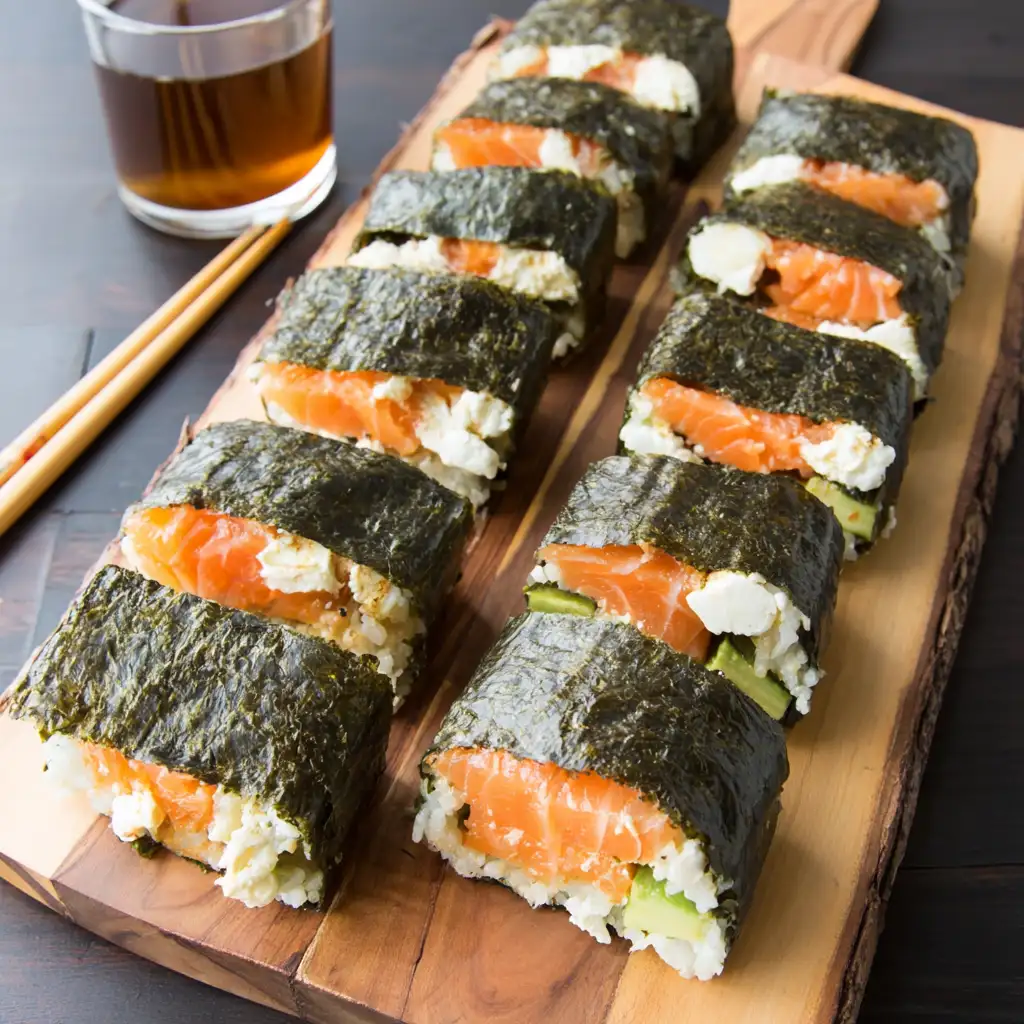
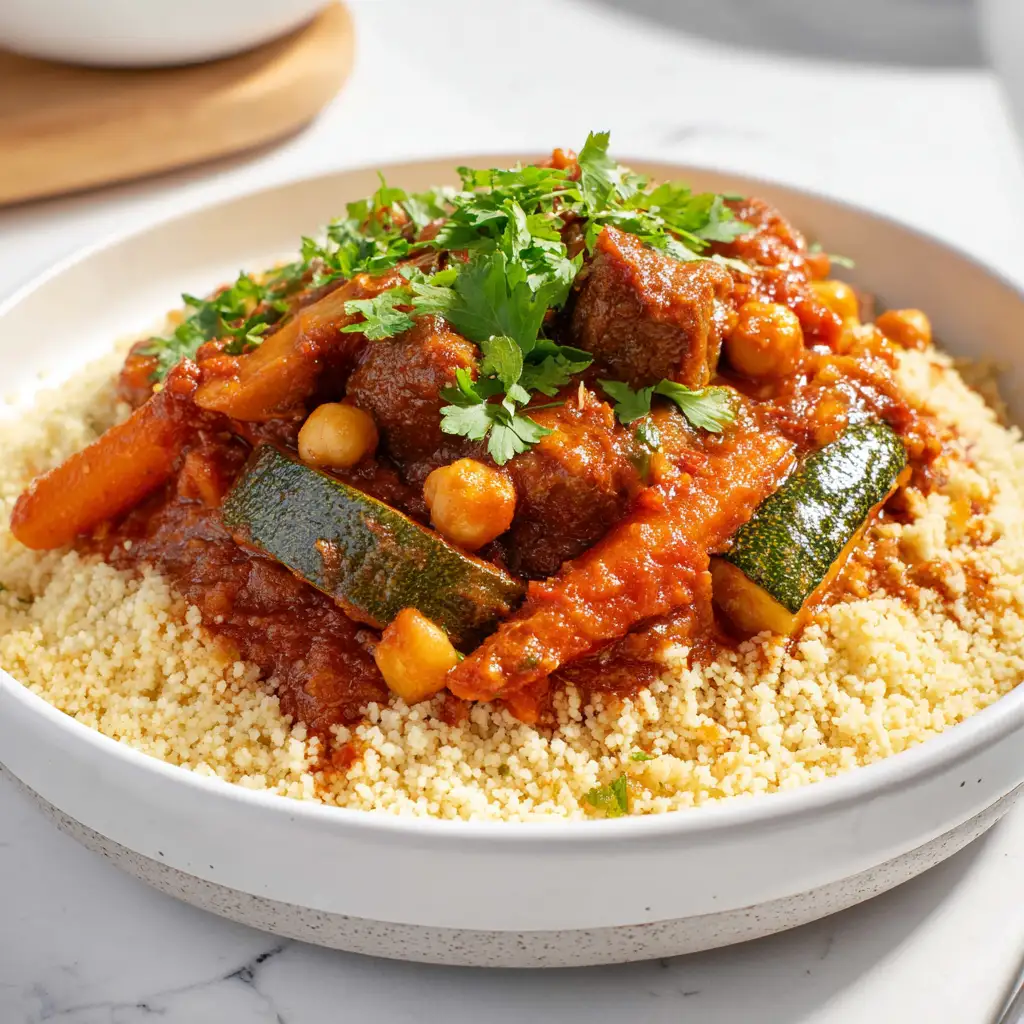
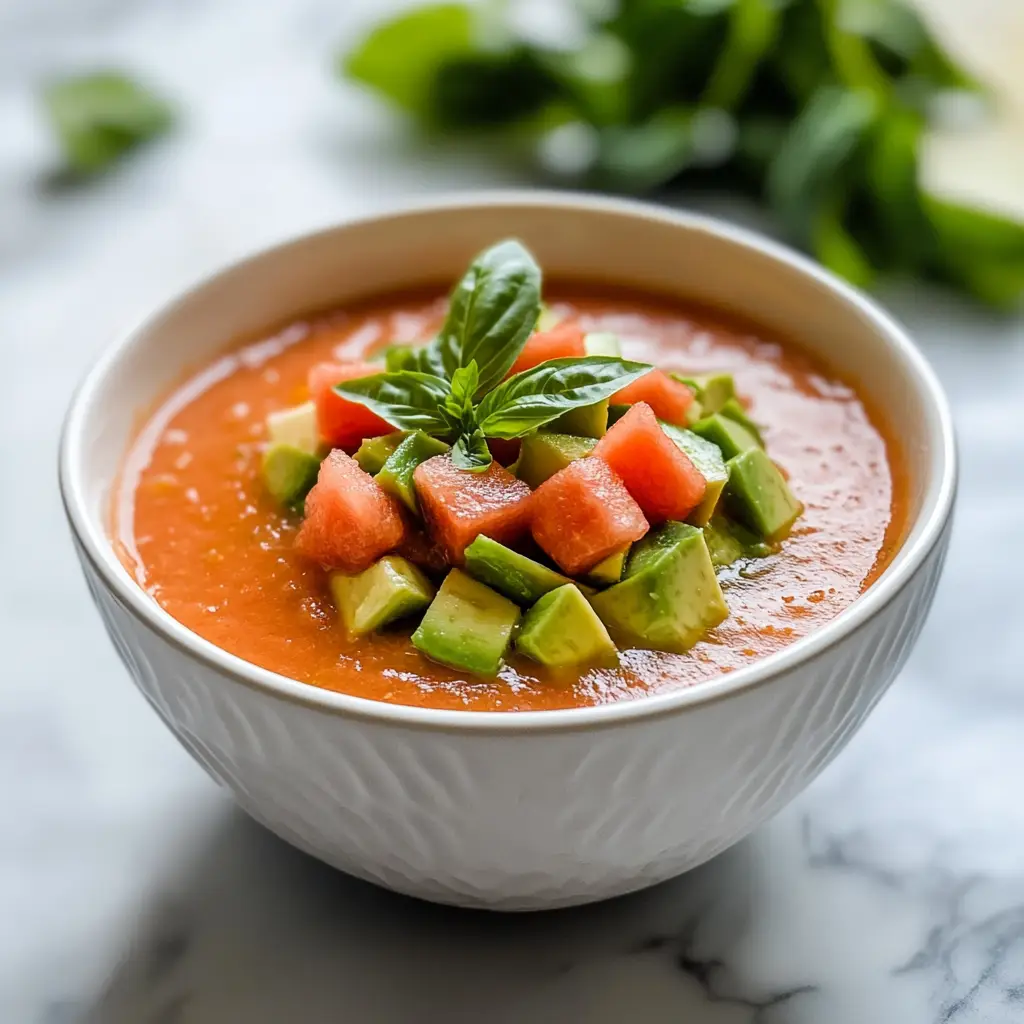
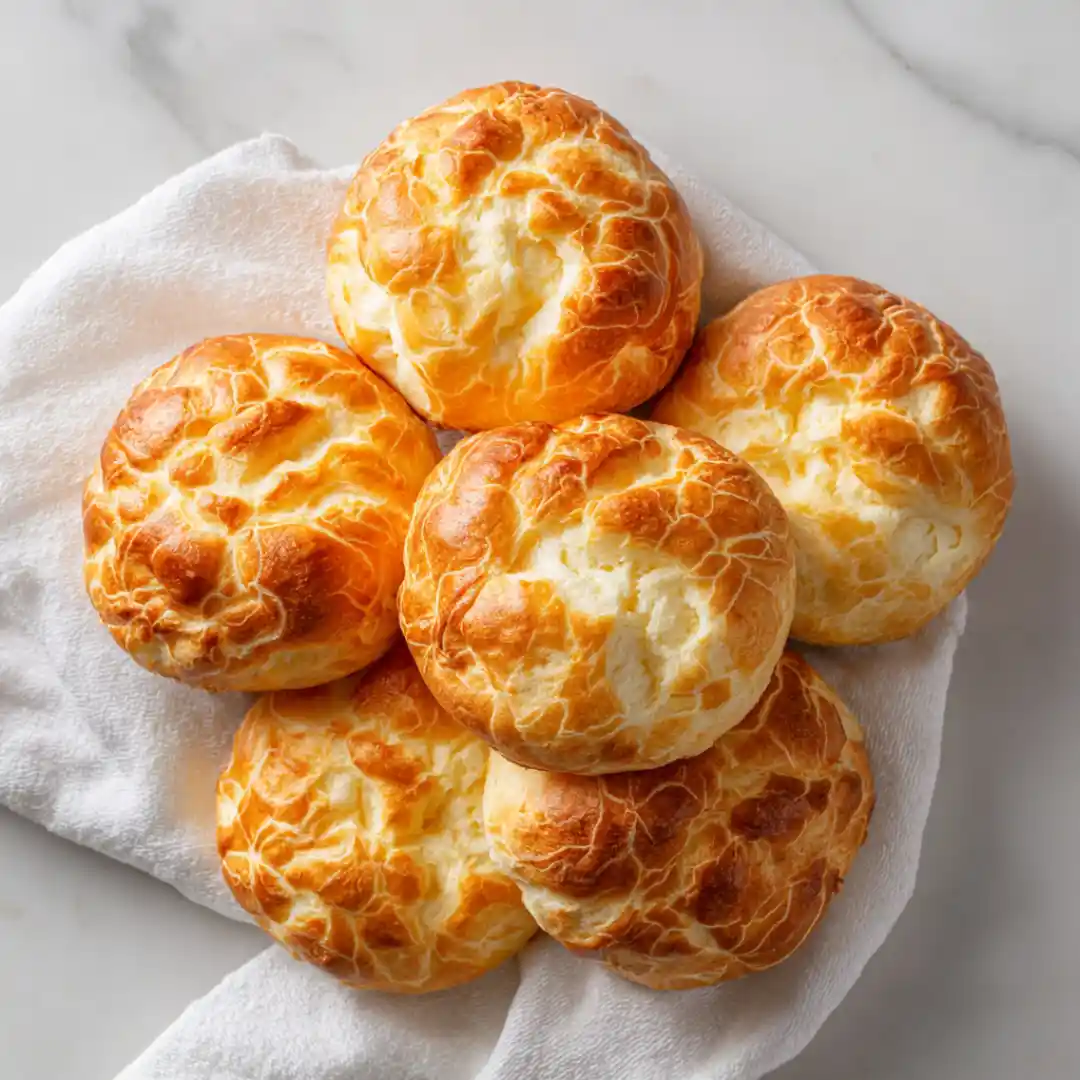
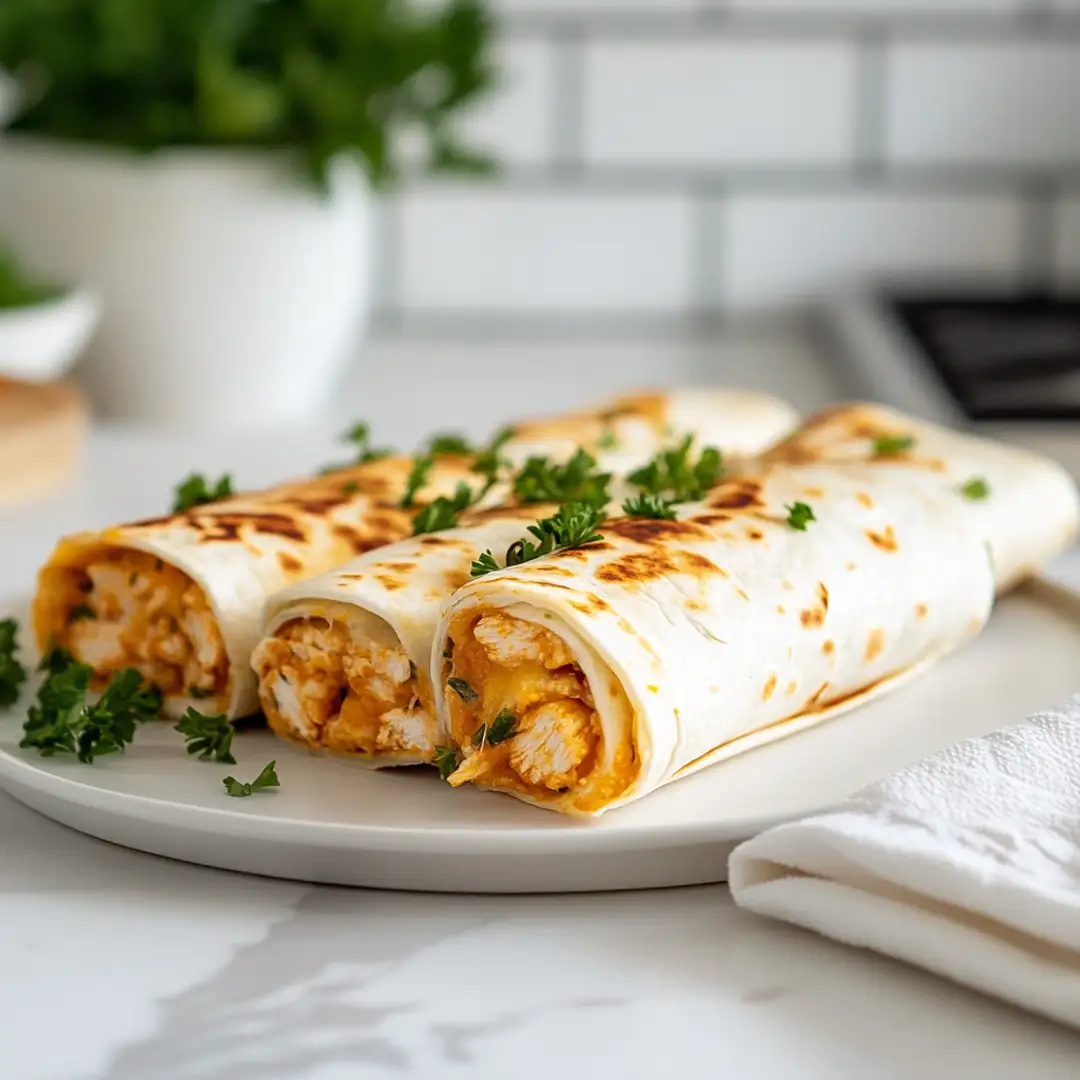
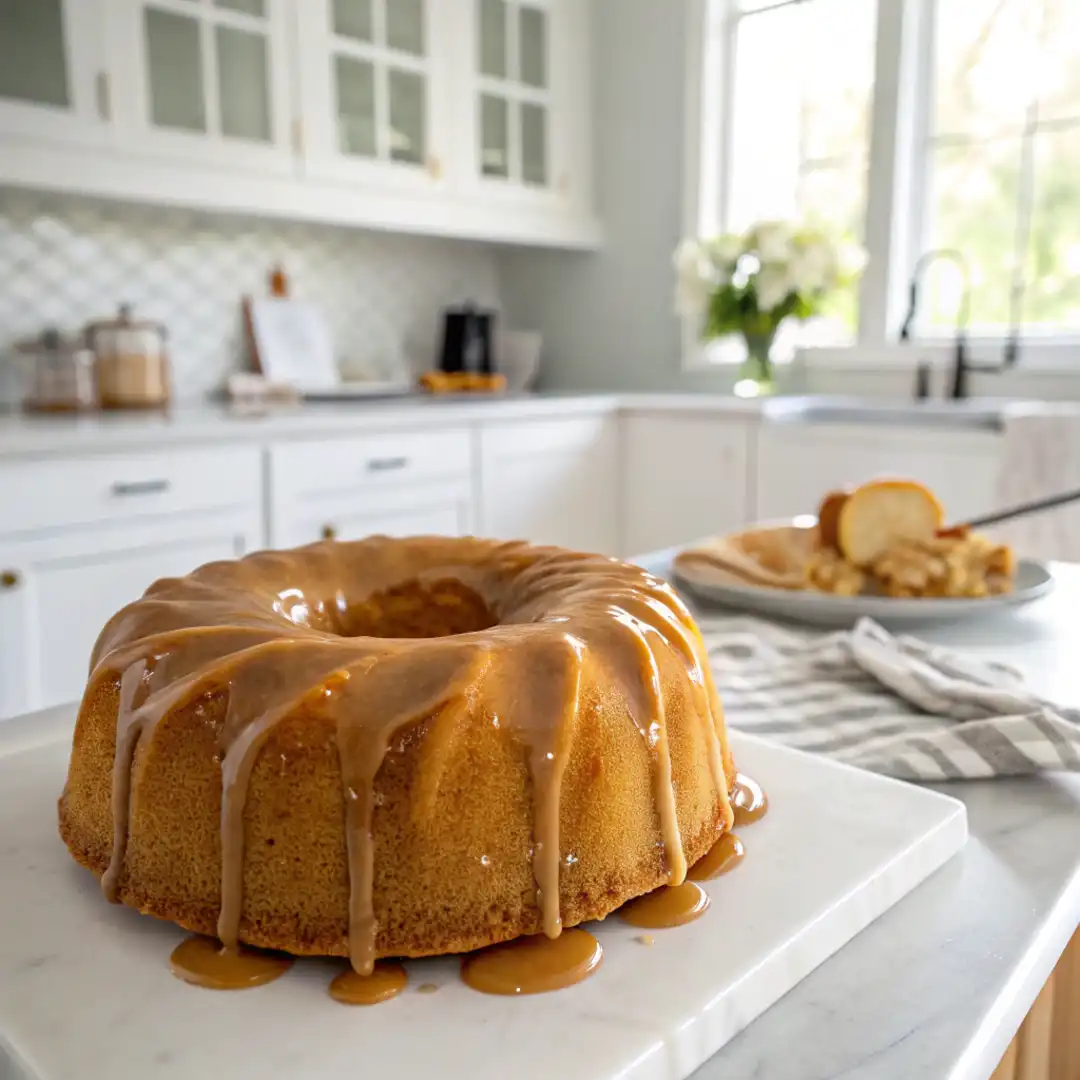


I tried one of your cottage cheese recipes and it turned out amazing! The pancake version was light and packed with protein. I really appreciate the healthy twist and the clear instructions. Great content, keep it up!